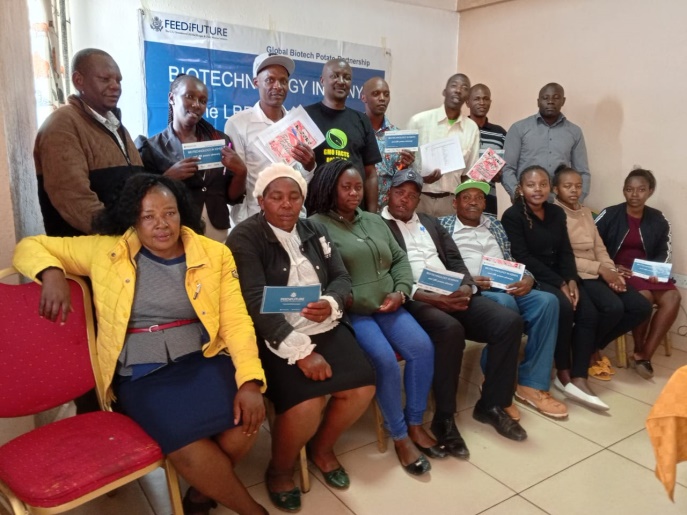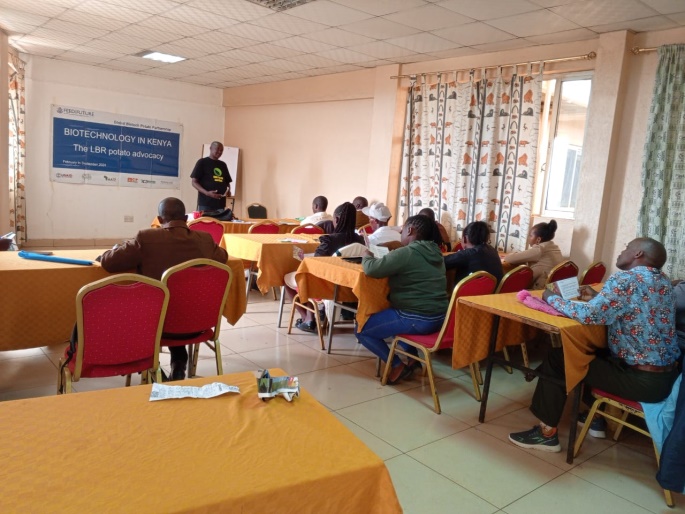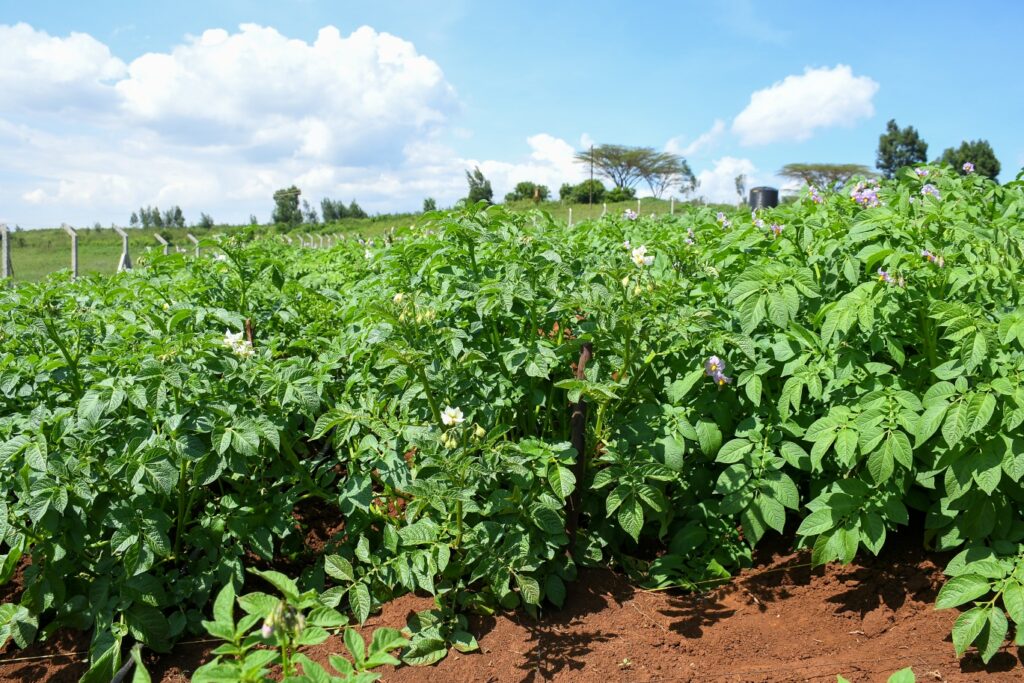In one of my previous blogs, I had captured how potato farmers in central Kenya, a region that had supplied the nation with Irish potato since independence was giving up on the crop after incurring losses due to several challenges that included the late blight disease that cost them a fortune in expensive pesticides that had to be sprayed every week, and sometimes twice a week when the crop was at a later stage.



Top: Photos of the central Kenya region sensitization team after a training session. Bottom: A crop of the late blight resistant potato at the field trial center in Kenya. Photo by: Kataru Concepts.
The situation in the central Kenya region is dire and needs concerted efforts by all stakeholders to ensure that the region, that’s ecologically strategic for potato farming, resumes its former glory and feeds the nation on sumptuous tubers. I can say the work for the late blight-resistant potato sensitization teams is cut out. The immediate challenge is to work with the already willing farmers through their organized groupings to have the crop reclaim its position on the farms.
On May 24th, 2024 a strategic meeting for 12 leaders drawn from various cooperative societies across Nyandarua was held in Ol Kalou town. This was closely followed by a second meeting on May 25th, 2024 attended by 16 leaders from Nyeri, Kirinyaga, and Murang’a counties. In both meetings, the monumental task of searching for the farmers’ lost love for the Irish potato came out clearly and required a ‘miracle’ such as the GMO potato variety.
According to the 2023 projection, this region has a population of about 5.9 million people whose mainstay is farming with eight crops taking priority across the five counties and 37 sub-counties. In this region political leaders take the front-line when it comes to pushing for and implementing government policy on improving agricultural practices. Luckily enough, the potato has not lost its position by coming second after coffee.
However, various challenges have forced several farmers to shift from potato farming to other crops such as pyrethrum, avocado, macadamia, wheat, maize, and bananas. According to Lee Waithaka, chairman of a potato farmers group from Kieni, Nyeri County, there is only one constituency out of the five that still practices serious Irish potato farming. The rest have shifted to sweet potatoes and other crops.
The situation in Kirinyaga County is not good. During the sensitization visits, a senior officer at the county couldn’t confidently point out a single constituency out of the five where my team could visit expansive Irish potato fields. He confirmed that the costs of production had forced farmers to abandon the crop in favor of sweet potatoes and other crops listed above.
It was only in Nyandarua County that everybody in the central region believed farmers were seriously growing the Irish potato, as Muranga County suffered the same fate as Nyeri, Kiambu, and Kirinyaga where those growing the potato had reduced acreage to lower quantities for family consumption but not for commercial purposes.
The situation notwithstanding, every farmer my team reached out to was enthusiastic about regaining the lost glory. Like other Kenyan potato farmers, they laughed off the GMO misinformation and fell short of demanding we provide seed immediately!
As we prepare to move the sensitization into top gear, it’s evident that the “GMO FACTS not FEAR” team and partners in this region are going to have a field day and easy time waking up the ‘sleeping Kenyan giant of Irish potato’ production. The acceptance of the technology by farmers and members of the public we met is on another level. The preparedness of farmers, traders, and other players in farming as evidenced by well-organized cooperative SACCOs is enviable.
In my opinion, if other parts of the country borrowed the present mood in this region, where they use local media stations to educate citizens, biotechnology will not remain a myth for long, and misinformation would die a natural death in the country. The technology would revolutionize our farming and make it a top income earner for households.
